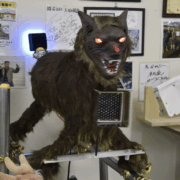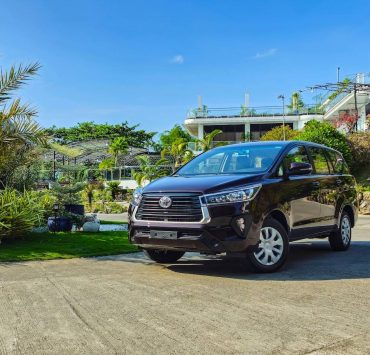Memories of a jeepney rider

Buzzwords like “jeepney phaseout” and “transport strike” are making their rounds on the internet and social media once again. They call to mind my own jeepney experiences—both good and bad—experiences one can only have in the Philippines.
I first learned to commute when I was 12 years old, in my first year of high school—and yep, you guessed it, it was on a jeepney (back when the minimum fare was P7). Before that, my father picked me up from school. He drove from his office in Pasay then picked up my older sister from her high school before reaching my school.
By the time he arrived at seven o’clock, molds and weeds had grown from my body from the lengthy wait in the lobby. “I’d rather learn to commute,” I told my parents.
But that was not the end of my problems. My high school stood on top of a small hill in Poblacion, Makati (before it turned into the popular kids’ hangout), and jeeps only passed through the main road, a hundred-meter walk down the hill. And it took lottery-level luck to find one that’s not yet full by the time my classes ended.
I waited by the sidewalk under the sweltering afternoon sun as packed jeeps passed me by until sweat soaked my school uniform.
Once my patience ran out, I walked to Power Plant Mall, half a kilometer away, where many people got off the jeeps. As a 12-year-old, it wasn’t the wisest decision to walk beside the road, but it got me home.
When rush hour was at its peak, I walked all of the way home from school—all 3 kilometers of it. The worst times were during the rainy season.

Teenage stupidity
I’ve collected hundreds of memories since the first time I rode a jeep. I’ve never had a pickpocketing memory, though, unlike many commuters. One time, I lost my phone, but that was more of teenage stupidity than the snatcher’s skills. My classmates and I were going to a friend’s house for a project.
Instead of putting my phone in my pocket or bag like a normal person, I wore it around my neck like an ID. By the time we reached my friend’s house, my phone was missing and, along with it, the last photos of my grandmother and childhood dog.
My most memorable jeep experience happened when I was in my first year of college. A few months prior, a hustler beat me 10 times at chess. I owed him around P100. To my student allowance, that was a large debt. Also, what if I got kidnapped or sold? Naturally, I never showed my face there ever again. Would you expect that I would run into the hustler in a random encounter on a jeep?
At first, I didn’t even recognize him. Then he asked, “Do you play chess?” I said no, vehemently shaking my head. I asked the driver to stop, got off the jeep and ran away as fast as I could.
Another experience I like telling my friends about is the time a group of three or four kids jumped aboard the jeep. Usually, they would just approach each passenger, ask for spare change, then leave.

But for some reason, two kids suddenly started to punch, kick and slap each other. The jeep turned into a boxing ring. They bounced around, hitting the passengers like they were ropes around the ring. The jeep started to move. They continued fighting. We worried we might get hit accidentally, or the children might fall off the jeep. We tried separating them.
Eventually, they stopped and left. A few stray punches hit me in the knees that day.
Strangers
Not all my experiences with the jeep were terrible, though. For example, one Sunday morning, I was heading to SM Manila. A man in his 60s, wearing casual home clothes and carrying a cane, got on the jeep.
A few stops later, another elderly man, wearing a polo shirt and trousers, boarded the jeep. Both sat at the end of the jeep, near the exit. Out of nowhere, the man in casual clothing asked the other elderly man: “Do you also have arthritis?” “What are your maintenance medications?” “Anyone taking care of you at home?” Before long, they were talking like longtime friends.
Growing up in a culture where you don’t talk to strangers and the commute is just a way to get from point A to point B, it was very surreal and touching to see two strangers connect and share personal experiences, even though they’d never see each other ever again.
Speaking of strangers’ good will, I’ve also had my share. I was still living in Makati, and I was going home from school. Near my stop, I realized, “My wallet is missing.” I couldn’t pay my fare. What do I do? Do I just leave without paying? I searched my pockets. My bag. My bag’s pockets. But it wasn’t there. A stranger, seeing my panic, asked what was wrong.
When I told her about my problem, she gave me P20, way more than my fare. And I needed that extra. Since I was already way past my stop, I had to take another jeep to take me back the other way. Thanks to that stranger, I was able to return home safely that day.
For more than 18 years, the jeep has been part of my life. No matter which school I studied in, no matter where I lived, the jeep was my primary mode of transportation.
Yes, it’s hot, especially during heat waves (I almost fainted once), but it’s so expensive to ride a bus or UV Express for the air conditioning.
In a jeep, I find people from different walks of life. Senior citizens and high school students. Mothers with children. Those in suits and those in pajamas. Those going to job interviews and those going to school. Even without talking with them, just riding in the same jeep is already an experience in and of itself. By watching and listening, I discover many wonderful life stories.

















